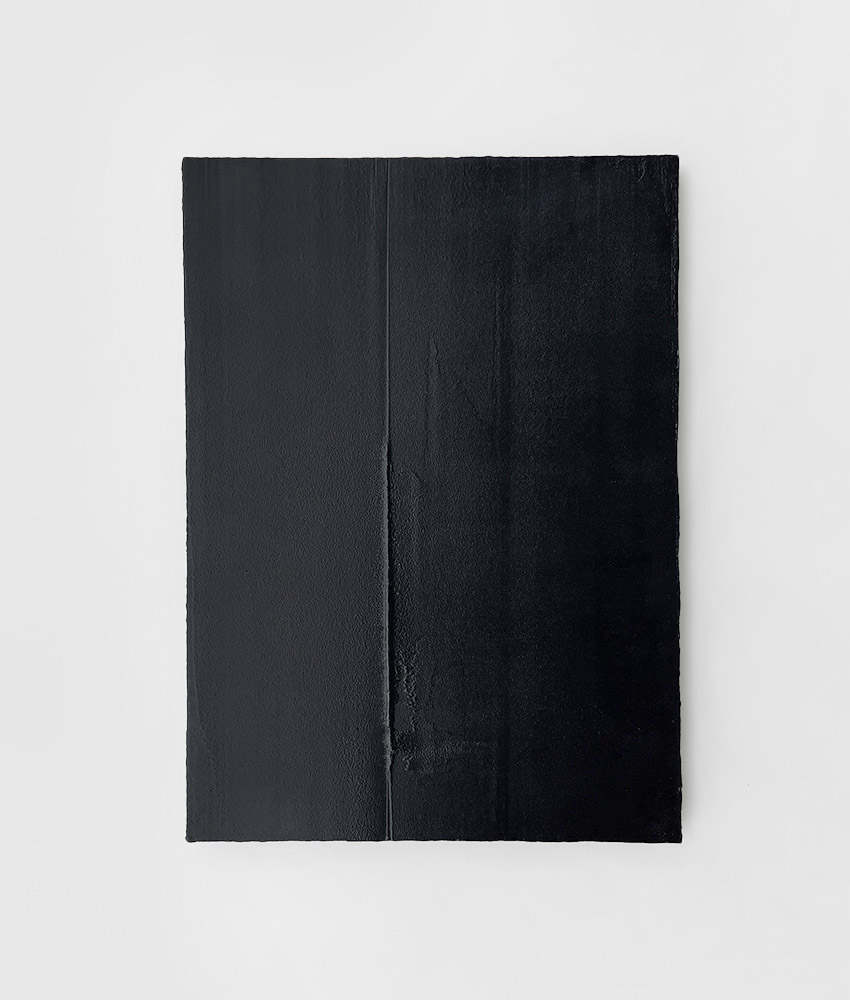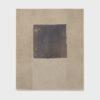Before I began my research into the color black, I had planned to write a similar article to one of my last essays about the color white. However, I quickly realized that my article on black would require a different approach and that my research would be much more extensive than I had initially assumed. But in order to delve deeper into the multifaceted meaning of black and better understand the complexity of this “non-color,” we need to focus on both the symbolic interpretations and the historical and cultural context. Therefore – without going into it any further – let’s explore the darkness.
Black – for many people an association for words like death, darkness, melancholy and emptiness. Even in classical painting, the color black often represents mystery, negativity and fear. It is difficult to name an exact cause for the negative connotation of black, as it is deeply rooted in historical, cultural, and psychological aspects. Since the Renaissance, black has mainly served as a representation of the night, to create spatial depth, and as a background to highlight other colors.1
In Zen, the color black is often associated with emptiness, infinity, and clarity. However, this “emptiness” is not considered a negative state, but rather an open space for possibilities and potential.
A closer look at the historical context
People react very differently to black monochrome paintings. While some find them emotionally stimulating and aesthetically pleasing, for others they can be provocative or even repulsive. So what prompted artists then, and still today, to limit themselves to only this color? Is the negative connotation of black a hasty assumption and can it help us change or even intensify our perception of art? Because to some, upon longer contemplation, a deeper philosophical meaning reveals itself in the darkness.
By definition, black is technically not a color at all, but the absence of light. When no light is reflected, we perceive things as black. In color theory, black, along with white and gray, is one of the achromatic colors.
The first completely black painting was made in 1617 by the English Paracelsian physician Robert Fludd. ‘Darkness’ he called his illustration, which was supposed to represent the “nothingness” that, in his opinion, preceded the universe. He was one of the first to try to make something non-objective, something abstract, intangible visible through his illustration. It was not until over 200 years later that the French painters Bertall (in 1843), Paul Bilhaud (in 1882), and then Alphonse Allais (in 1897) created black monochromes. Finally, in 1915, Kazimir Malevich painted the most famous black painting (fig. 2). For Malevich, it was to be the “zero point of painting” and thus opened up an entirely new aesthetic at the time.
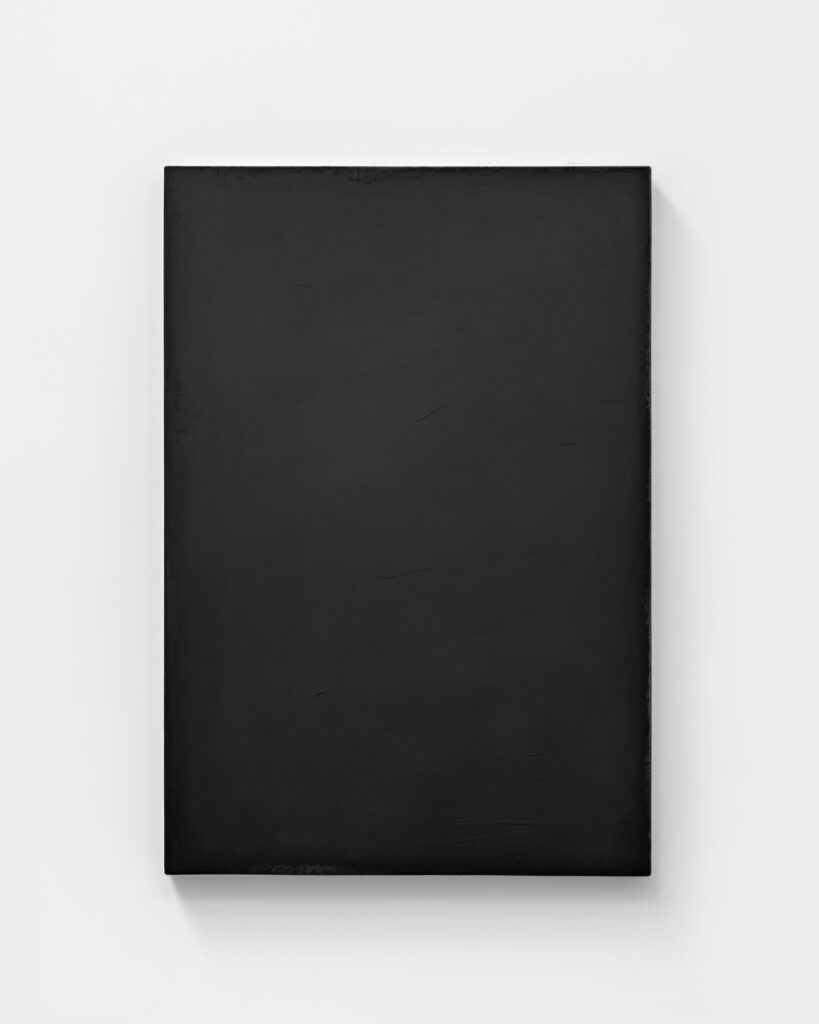
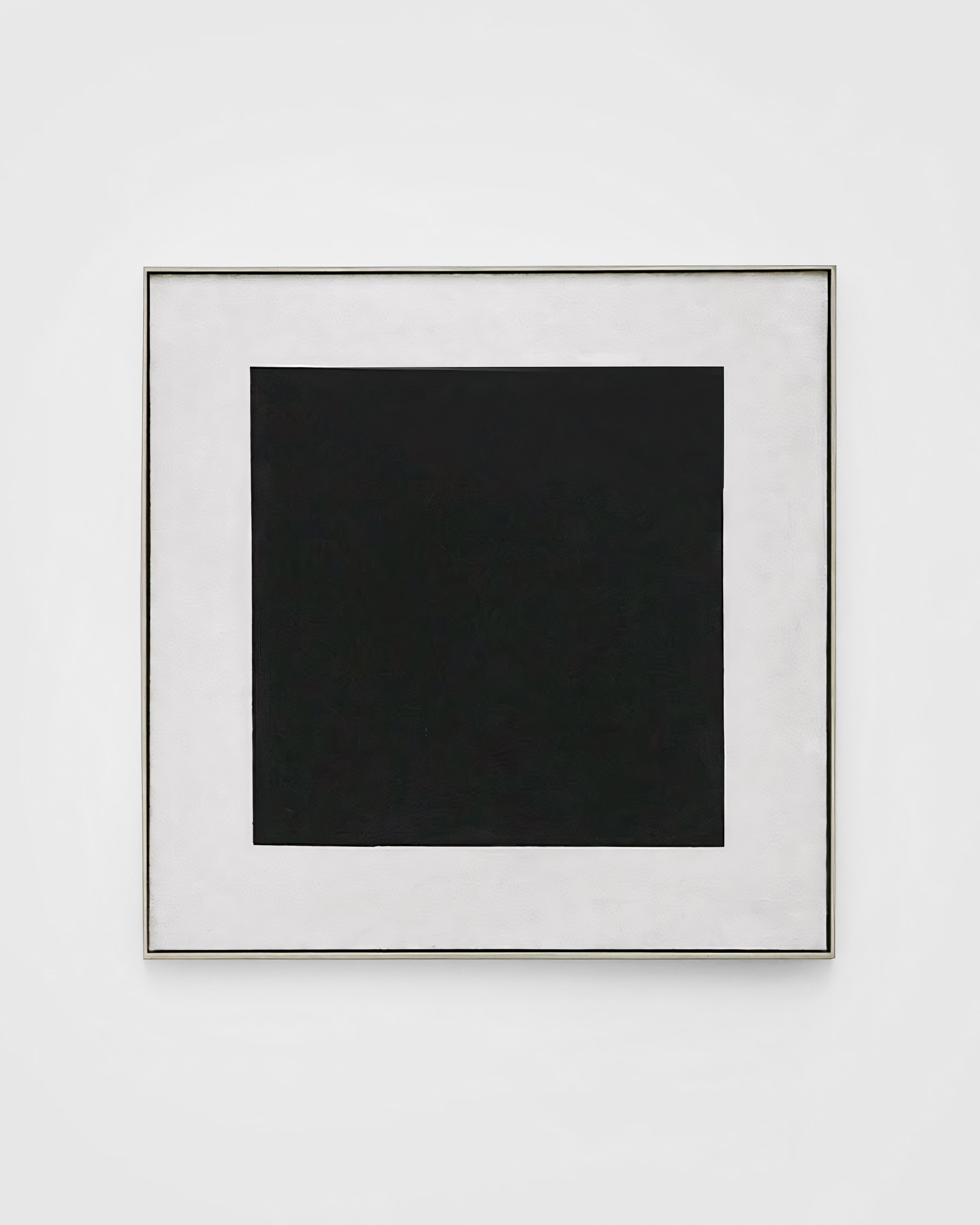
Black Paintings of the New York School
With the rise of abstract art in the 20th century, black gradually broke away from its traditional symbolism and became an independent form of expression. In the late 1940s, some artists of the New York School explored the color. This was a loose association of artists, such as Jackson Pollock, Willem de Kooning, and Mark Rothko, who were known for their contributions to Abstract Expressionism. During this time, many black, monochromatic paintings were created.
Barnett Newman was one of the first to create a black monochrome painting in 1949. For him, the artwork with the title “Abraham” symbolized a new beginning in painting and an attempt to free himself from the history of art.2,3 Robert Rauschenberg, on the other hand, used the color black to explore his own identity and to protest against the color theories of his teacher Josef Albers.4 From 1956 onwards, Ad Reinhardt worked intensively with black. In his so-called “Meditation Panels,” he used minimal differences in shading to explore the limits of perception and the complexity of color.5
Mark Rothko saw black as the climax of his creative work. It was long mistakenly assumed that his dark paintings reflected his depressive state of mind, but he also created works in brighter colors at the same time.6 Frank Stella, on the other hand, used black in his minimal geometric works to question the concept of art as an individual creative expression.7
Whether it was Newman’s introspective use of black, Rauschenberg’s protest through black monochrome, or Stella’s radical reinterpretation of art, the use of the color black thus marked a new understanding of the color. For the artists of this time, black became an important tool for their individual, artistic expression. The symbolic meaning of the color varied depending on the artist and ranged from the rejection of traditional painting to the search for the artistic self to the mere reduction of art to its purest form.
If you would like to learn more about the Black Paintings of the New York School, I recommend the following article. There, I explore in detail the motivations of the artists.
The color Black as a tool
For the French artist Pierre Soulages (1919 – 2022), the color black was less symbolic. For him, black was not the absence of light, but the opposite. Known for his black monochrome paintings, Soulages explored the reflection of light in black in his works. He strove to create autonomous works of art that stood on their own and represented nothing. Upon closer inspection, a complex dialogue between the viewer, the texture, the surface, and the light opens up. “Outrenoir” (from the French “outre-noir” = beyond black) is what he called these intuitive works.8 Soulages often worked with unusual tools such as rough brushes, brooms, and wooden sticks, modulating a relief-like texture. His works are characterized by a deep sense of energy, movement, and depth. Through their symbiosis with light, they show us the many facets and nuances of black.
While Soulages focused on the reflection of light through the color black, Richard Serra used color as a tool. For Serra, who was a student of Josef Albers like Rauschenberg, color played a significant role in his creative work beginning around 1971. In his mostly large-scale drawings and prints, he used black to avoid metaphors or interpretations that might arise from the use of color. Rather, black was a tool for him to shape space, evoke physical responses, and lead the viewer to reinterpret his surroundings and his position within them.9
Agnes Martin also dealt intensively with dark hues at the end of the 1980s. She initiated a new phase in her creative work with a series of dark gray paintings, which she herself called ‘Black Paintings’. Unlike her previous paintings, which tended to be pale grays, her ‘Black Paintings’ convey an almost supernatural heaviness. Martin continued this style of painting for nearly a decade, tirelessly exploring the subtleties of hue and texture in her translucent gray and white compositions. This phase ended in 1992.10 Shortly before her death in 2004, she returned to black monochrome. In “The Sea” from 2003, she created a sense of rhythm and movement through a combination of intense black and thin, irregular white lines.
I use black because it is a color that doesn’t transport elusive emotions.
Richard Serra
Emotion and expression in contemporary art
Even today, many artists devote themselves to the infinite depth of black. For the Berlin-based artist duo Djeric-Hunold, black is more than just a color, it is a feeling and a central element of their work. They use black as a symbolic silence, as a means of expression that hides nothing and reflects everything.11 Their “black melodies,” as they call their compositions, are not only visual representations but also profound landscapes, an interplay of light and shadow (fig. 3).
Italian artist Enrico Dellatorre uses his monochrome black surfaces to reveal the inner structure of the materials he uses. In doing so, his work represents a constant exploration of space.12 In his black monochromes, the German artist Günter Umberg is primarily concerned with defining color in terms of its properties and significance as a central medium of painting.13 To achieve this, he uses a special technique in which he applies up to forty layers of paint to aluminum plates, creating his characteristic fine and almost “velvety” grain (as seen in fig. 4).
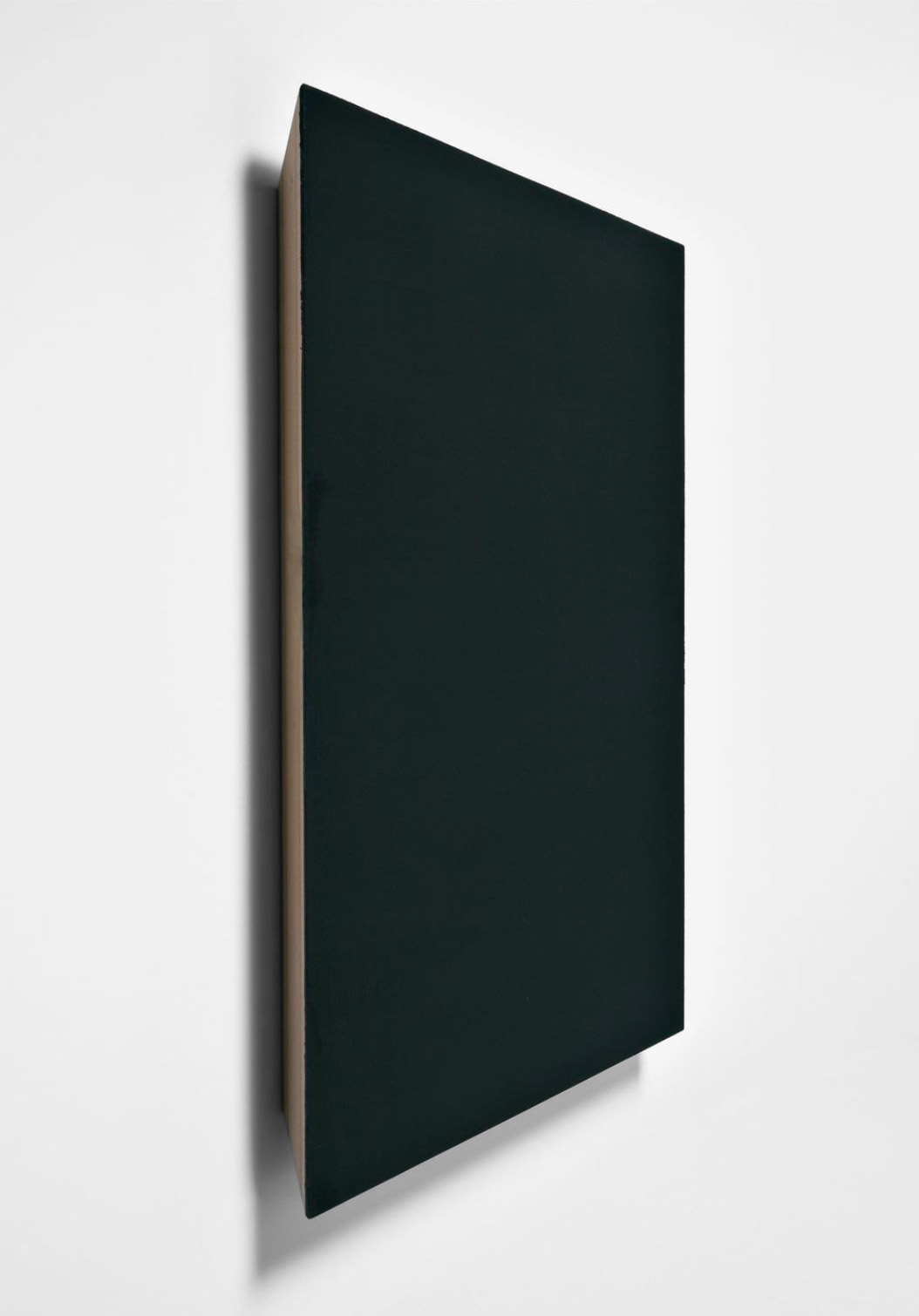
In recent years, the color black has also been the source of a remarkable controversy in the art world. British-Indian artist Anish Kapoor, known for his large public sculptures and installations, secured the exclusive artistic rights to the black called Vantablack.14 This is the blackest man-made black, which absorbs 99.965% of light. He uses the pigment to express concepts such as emptiness in his works.
In his exhibition “Anish Kapoor: Work, Thoughts, Experiments” in Porto in 2018, he used the “Vantablack” in an installation called “Descent Into Limbo”15. This is a pit about three meters deep and wide that reflects so little light that it looks like a bottomless pit. A 60-year-old visitor to the exhibition fell into this “black hole”. Fortunately, nothing worse happened to him.16
Black Paintings – Invitation to explore your own self
Since the beginning of modern art, artists have sought to challenge existing conventions. In the early 20th century, black monochrome paintings were seen as radical and tremendously powerful statements. From the “zero point of painting” with Malevich’s black square, to artists like Reinhardt, Soulages, and contemporary artists like Djeric-Hunold and Kapoor – For all of them, the black monochrome is either a symbol of stillness, openness, reflection, new beginnings, or inner exploration. Yet each one of them has their own unique approach. The color black thus leads to a deeper and more complex reading that goes beyond common connotations.
In this context, the interpretation of a black painting depends on the individual symbolism that we give it. If for us black is something negative, black paintings can irritate us, but if on the contrary, we see black as something contemplative and inviting, the black painting becomes for us something beautiful: a meditative retreat that invites us to dive into our own self.
Further Reading / Resources
- The Colors Black in the New York School, Stephanie Rosenthal, 2003, p. 47
- https://www.moma.org/collection/works/80191?artist_id=4285&page=1&sov_referrer=artist
- The Colors Black in the New York School, Stephanie Rosenthal, 2003, p. 169
- https://de.wikipedia.org/wiki/Robert_Rauschenberg
- https://www.staatsgalerie.de/de/sammlung-digital/abstract-painting
- Jacob Baal-Teshuva, Mark Rothko, p.74 ff.
- https://medium.com/@hav/minimalism-and-meaning-making-the-self-referentialism-of-frank-stellas-black-paintings-ee6f2875f1eb
- https://de.wikipedia.org/wiki/Pierre_Soulages
- ‘Richard Serra – Black is the Drawing’ Exhibition Text by Axel Vervoordt Gallery, Antwerp, Belgium, 2013
- https://www.pacegallery.com/exhibitions/agnes-martin-distillation-of-color/
- https://djeric-hunold.com/
- https://www.pamono.de/enrico-della-torre-black-composition-2017-charcoal-on-linen
- https://www.schwarzwaelder.at/de/artists/guenter-umberg
- https://www.azuremagazine.com/article/blackest-black-anish-kapoor/
- https://hypebeast.com/2018/8/anish-kapoor-descent-into-limbo-serralves-museum-man-falls-accident
- https://www.wmagazine.com/story/man-falls-into-anish-kapoor-black-hole-portugal-museum
